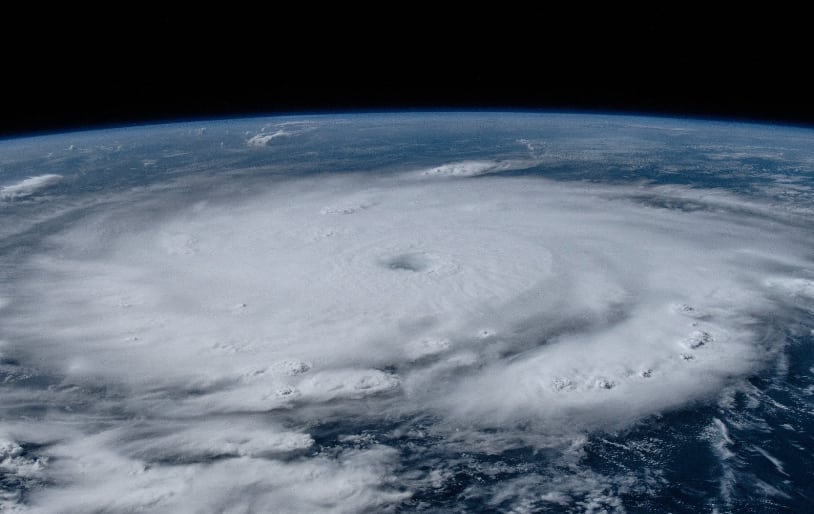Hurricane Beryl US insured loss $2.5bn – $4.5bn, $3.7bn best estimate: Moody’s RMS

The US private market insurance industry loss from recent hurricane Beryl’s impacts is estimated to fall in a range of $2.5 billion to $4.5 billion by Moody’s RMS, with the risk modeller saying that its best estimate for the industry loss is $3.7 billion.
The estimate of insured losses in the United States from hurricane Beryl is based on insured wind, storm surge, and inland flooding impacts, Moody’s RMS explained.
Moody’s RMS Event Response team exclude NFIP flood losses from these totals.
In addition, the company said that insured losses in the Caribbean and Mexico are estimated to come in below US $1.5 billion.
Another data point provided by Moody’s RMS is that National Flood Insurance Program (NFIP) losses from hurricane Beryl are estimated to be less than $300 million.
The US private market insurance industry loss estimate breaks down into $2.3 billion to $4.2 billion from wind including coverage leakage, $100 million to $200 million of storm surge losses, around $100 million of inland flood losses excluding the NFIP, giving the total range of $2.5 billion to $4.5 billion and best estimate of $3.7 billion.
Moody’s RMS’ industry loss estimate compares to one from CoreLogic that pegged hurricane Beryl wind losses in the US at between $2.5 billion and $3.5 billion and one from Karen Clark & Company that said hurricane Beryl is estimated to have caused insurance industry losses of $2.7 billion in the United States.
Jeff Waters, Director, North Atlantic Hurricane Models, Moody’s, commented, “Hurricane Beryl was yet another complex and impactful event across multiple fronts and regions. Parts of the Caribbean sustained catastrophic damage that will unfortunately take a long time to fully recover.
“Beryl ran out of room to intensify in the Gulf of Mexico before making landfall in Texas, which lessened the impact on the (re)insurance market. Tracking inland, Beryl is certainly noteworthy as it maintained intensity to bring some of the strongest observed winds in recent history over the densely populated Houston Metro area.
“Texas building codes – while not as stringent as other states – should allow most structures to withstand the winds reported from Beryl, but with the region’s high exposure density, significant amounts of expected minor/moderate damage will contribute to the overall total insured losses.
“Estimated losses reflect property damage and business interruption to residential, commercial, industrial, watercraft, and automobile lines of business, and consider sources of post-event loss amplification (PLA) and non-modeled sources of loss.”
Raj Vojjala, Managing Director, Model Development, Moody’s, added, “In addition to wind and water modeled impacts from Beryl, numerous treefall-related damages, infrastructure washouts to roads and railways, and tornado-related damages were reported. Together with significant power outages (over two million at peak), all could exacerbate damage, prolong repairs and business interruption, and cause pockets of claims inflation.
“After Hurricane Harvey in 2017, South Texas witnessed notable coverage leakage from inland flood on wind policies and litigation-related impacts, and to a much lesser degree, Beryl may also produce similar effects.
“Wind will largely drive U.S. private market insured losses from Beryl, though storm surge and inland flood-related losses could contribute to higher proportions of insured losses, particularly in some of the worst-affected Texas counties, in non-coastal regions with significant NFIP take-up rates. Insured wind and NFIP losses will be driven by residential lines, while commercial and automobile lines will drive private market water losses, primarily in Texas.”
Julie Serakos, Managing Director, Product Management, Moody’s, also said, “We expect most insured losses from Beryl to be retained by primary insurers, and some economic losses, particularly in the Caribbean, to be aided by triggering parametric coverage in place.
“Hurricane Beryl seemingly sets the tone for an expected active and potentially impactful North Atlantic Hurricane season. All (re)insurance value chain market segments need to prepare to monitor and respond to unfolding events, with the latest Moody’s RMS modeling tools and exposure datasets reflecting the most current and complete views of the hurricane risk landscape.”






